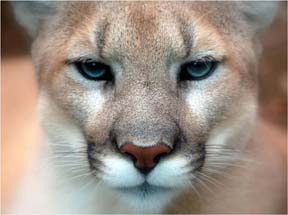 Three Florida panthers (Puma concolor) were hit and killed by vehicles in a one week period this November, the Naples News reports. That brings the Florida panther death total to 23 for the year. It’s possible that this year will tie or break the record number of panther deaths of 25, set in 2007. But more important, the trend of the total number of deaths each year generally increasing over the last 10 years.
Three Florida panthers (Puma concolor) were hit and killed by vehicles in a one week period this November, the Naples News reports. That brings the Florida panther death total to 23 for the year. It’s possible that this year will tie or break the record number of panther deaths of 25, set in 2007. But more important, the trend of the total number of deaths each year generally increasing over the last 10 years.
What does it all mean? Another article in the Naples News quotes Florida Fish and Wildlife Conservation Commission panther team leader Darrell Land as saying the trend is no reason to worry. He says in the article that more panthers mean more deaths. He also says that known panther births are keeping pace with the panther deaths.
Public Employees for Environmental Responsibility (PEER) does not agree, saying in a press release that something needs to be done to stem the mounting death toll of the federally endangered species.
However, it was the Naples News article that noted:
In 2004, PEER represented former U.S. Fish and Wildlife Service biologist Andy Eller in an unsuccessful attempt to get his job back after he questioned the science his agency was using to approve development in panther habitat and was fired.
In other wild cat news, disease may not be the first thing you think of when you think of predators in urban areas. But Fluffy and Fido have to worry about catching (and giving) diseases to bobcats in addition to worrying about winding up as a bobcat’s dinner, a recent paper in the Journal of Clinical Microbiology says. Actually, the paper focuses on disease transmission between humans and bobcats, which may be farther off anyone’s radar, and the diseases mentioned are familiar to pet owners.
NBCNews.com has the LiveScience story, here.
You can find at least the abstract for the Journal of Clinical Microbiology paper, here. (Full access requires a subscription or fee.)
Finally, the ninth mountain lion (Puma concolor) confirmed in Kansas in modern times was seen in a trail camera photo this month, although the photo was taken in October, a press release from the Kansas Department of Wildlife, Parks and Tourism says. Read the press release here.
Photo: courtesy Missouri Department of Conservation

Pingback: 2012 Year in Review | State Wildlife Research News